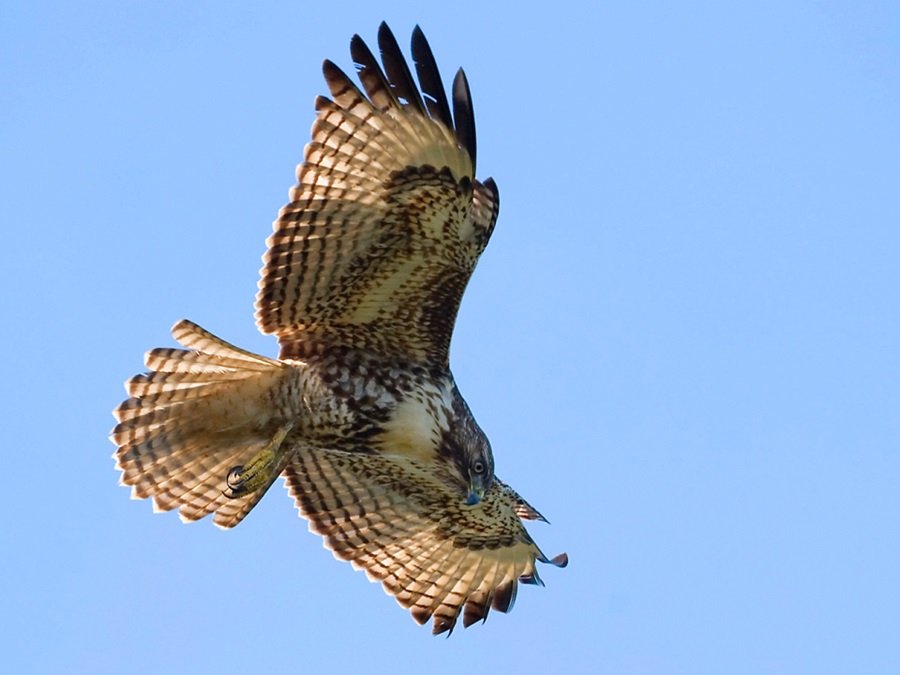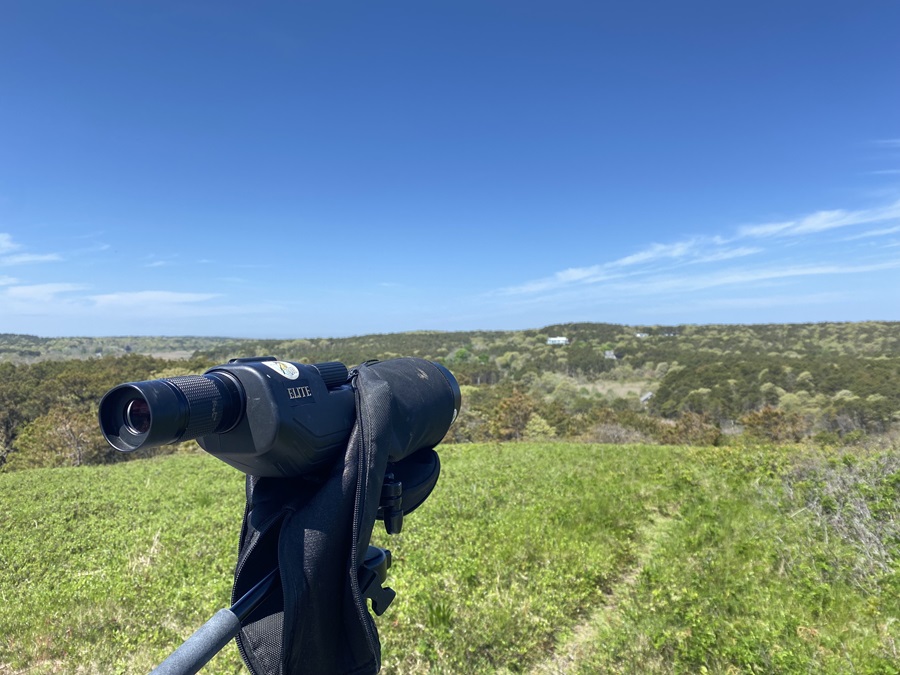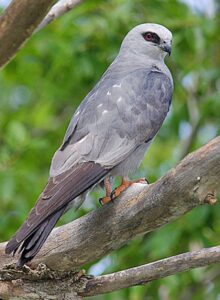TRURO — In the world of birding, there are a few categories with their own histories and techniques. Seawatching, where a birder peers out at the sea with a scope to watch for seabirds flying by, is a favorite of mine, as is looking for owls at night, also known as owling. None may have as storied a history as hawkwatching.
While people have surely been watching hawks for as long as they could look skyward, the North American tradition includes a dark period when hawk hunting was encouraged. In the early 20th century, raptors were considered vermin, and states put a bounty on their heads. Hunters would gather at a handful of migration chokepoints, most famously in the Blue Mountain Ridge west of Allentown, Pa. and at Cape May, N.J., where large numbers of raptors fly by each year. The daily slaughter would sometimes number in the hundreds. Fourteen hundred hawks were killed on one October day in 1920.

As the conservation movement helped Americans recognize the value of these birds, laws were created to protect them, and these two sites became popular with visitors who came to watch hawks instead of kill them. There are hundreds of official hawkwatches across North America and thousands of sites where birders go to watch raptors fly by.
When I went to watch for hawks at Bearberry Hill, just inland from Ballston Beach in Truro, with my friend Will Sweet on May 24, we were, in a way, participating in a tradition.
Unlike most birds, raptors are most active in the middle of the day, so the strategy for seeing them is often as simple as finding a high vantage point, setting up a spotting scope, and scanning. This makes Bearberry Hill a perfect place for hawkwatching: from its summit, you can see west down the Pamet River valley and good distances north and south over nearby bluffs.
There may be other geographic features, like the shape of the Cape or the slopes of the valley, that draw in raptors and make Bearberry Hill a good spot, but I am not an experienced enough hawkwatcher to understand them.

The best time to watch hawks here is from late April through early June on warm days with winds out of the southwest. On these days, it seems, raptors are pushed down Cape. We were here to look for kites. These are small southern raptors, relatives of hawks, that are rare on Cape Cod.
Mississippi kites, the ones we were more likely to see, are all gray with long squared-off tails, while swallow-tailed kites are black and white with long V-shaped tails. Neither bird was expected, but we were hopeful because another birder had seen two Mississippi kites at Bearberry Hill the day before, and a swallow-tailed kite had been hanging out near Cotuit for the better part of a week.
I climbed the hill around 8:15 a.m. Will was there already, scope out and scanning the horizon for raptors. A prairie warbler sang its rising buzzy song below us, and cedar waxwings zipped overhead. It was just a hair over 70 degrees and sunny — a beautiful day for watching hawks.
Not 10 minutes after I arrive, Will says, “I think I have a kite.” I swing my scope around to where he’s looking as he describes where he’s seeing it. Soon, I pick it out: a tiny, distant speck of a bird, circling as it rides thermals. It’s far away, but even from this distance, we can see the long tail and thin, long wings. Nothing else out here looks like it. It’s a Mississippi kite.

We spend the next 15 minutes hoping it will come closer, but it doesn’t seem inclined to do so. It continues down the south edge of the Pamet River valley and finally disappears into the heat haze. Before it does, Will snaps a few photos. They’re not good ones, but enough to confirm our identification.
We don’t take much time to celebrate before we’re back to scanning. With early luck like this, we’re convinced the day will get even better. As it warms up, more raptors appear to ride the thermals. Ospreys and red-tailed hawks are the most numerous birds early on, and they’re soon joined by kettles — those swirling, rising flocks of turkey vultures.
Gradually, fewer raptors make appearances. We spot a trio of broad-winged hawks, smaller relatives of red-tailed hawks, winging their way south. Will also picks out a young bald eagle flying over the Pamet valley.
One of the joys of hawkwatching at Bearberry Hill is the abundance of nonraptor bird life there. We could hear great crested flycatchers and eastern kingbirds singing constantly, with a scarlet tanager joining the chorus at one point. Among the flocks of tree, barn, and northern rough-winged swallows that swarmed the hill to catch insects, we found a pair of locally rare cliff swallows — a stoutly built bird with a white forehead and buff rump.

There was a lot of other wildlife to see as well. Fireflies were abundant, getting all over the wooden deck and our clothes. A pair of hikers pointed out a red fox ambling down North Pamet Road, while a whale watch boat on the ocean led us to a pair of feeding humpback whales.
As the day wore on, we spotted another small hawk, a red-shouldered hawk, an uncommon species on the Outer Cape. Otherwise, however, the raptor movement slowly died down by midday. Around noon, we left our vigil, satisfied with our Mississippi kite sighting.
What we didn’t know was that we were not the only Cape Cod birders to spot a Mississippi kite that day. On May 24 an unprecedented wave of these kites was seen in southeastern New England. On the Cape, there were two seen at High Head in Truro, two at Waquoit Bay in Falmouth, and a single bird at Mashpee Commons. There were also single birds in Westport, Dighton, and Andover, plus a handful around Providence, R.I. Some of these birds might have been repeats between different sites, but it’s clear a good number of these otherwise-rare birds appeared in the area that day.
When a rare raptor flies by out here, it’s not like you can get a call and then go look for it the way you would a rare warbler or rare sparrow. The challenge with finding rare raptors on the Outer Cape is that they tend not to stick around. They seem to end up here by accident, and if they are seen at all, it will usually be when they are drifting by, trying to navigate home. That’s why there’s little chance you can go see one that others have found. You just have to look at the weather, choose a good day, find a good spot, and start scanning.



